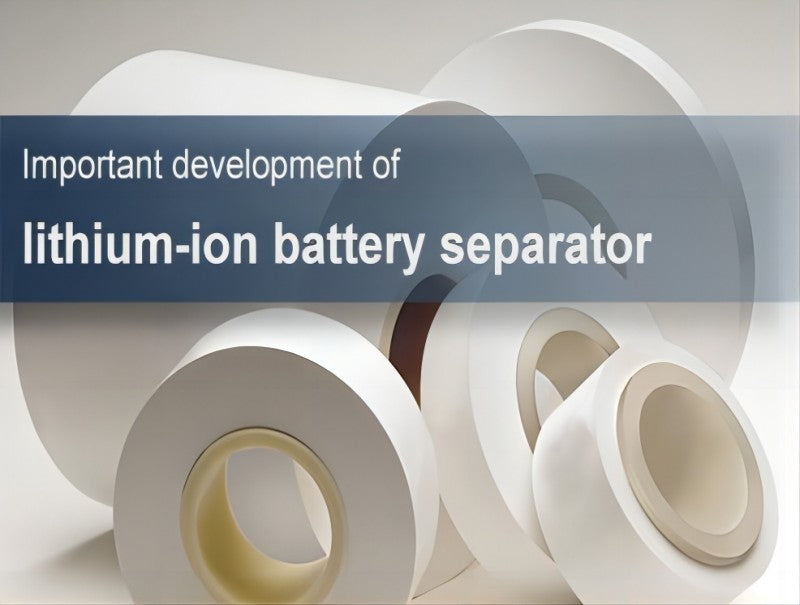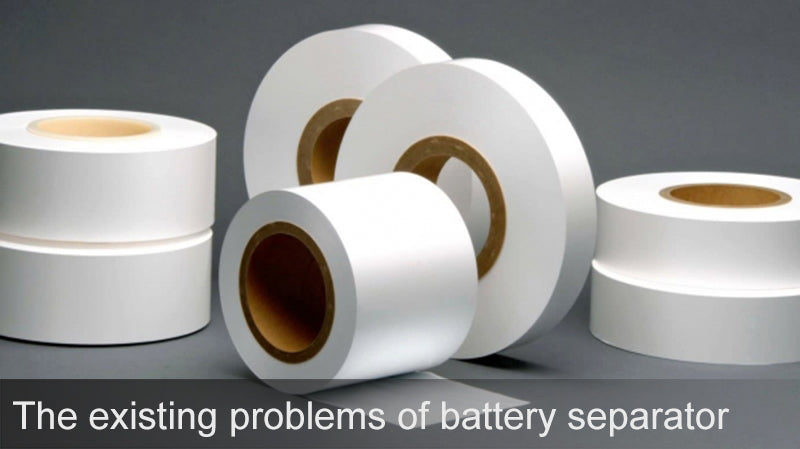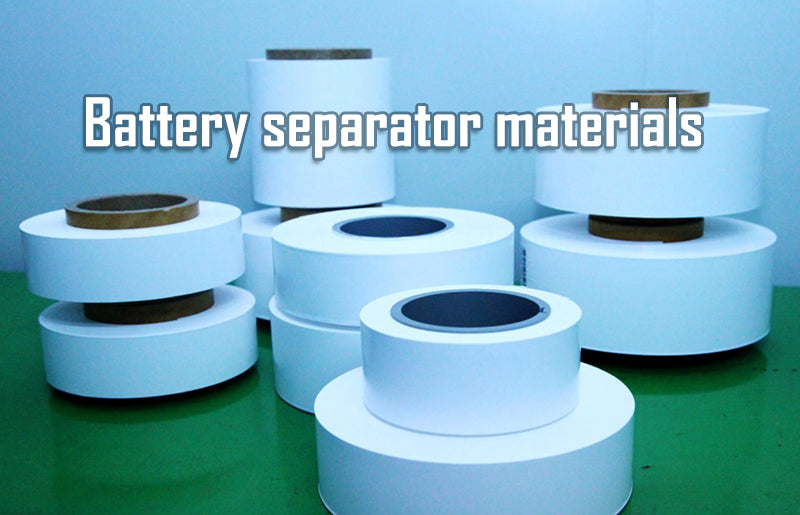
Main content:
As one of the four major materials of lithium-ion batteries, the diaphragm does not participate in the electrochemical reaction of the lithium-ion battery, but it can provide a physical barrier for the positive and negative electrodes of the battery, and provide a channel for lithium ion transmission.
The existence of the battery diaphragm has a great impact on battery performance and battery safety plays a vital role. The porosity of the separator in the battery not only provides a channel for the movement of lithium ions, but also has a certain ability to absorb and retain the electrolyte to ensure the normal operation of the battery.
The existing problems of battery separator
As a battery separator, it must have certain mechanical strength and thermal stability, and it needs to maintain dimensional stability under extreme conditions, so as to avoid direct contact between the positive and negative electrodes and cause safety problems caused by battery short circuit. Unfortunately, conventional polyolefin separators are easily punctured and have significant thermal shrinkage, which seriously affects the safety performance of the battery.
In addition, the current separator is getting thinner and thinner to meet the needs of high energy density batteries, making battery safety issues more prominent. Various strategies have been proposed in the industry to reduce the impact of the separator on the safety performance of the battery. The most typical one is to coat one or both sides of the separator with a layer of functional material to improve the mechanical strength and thermal stability of the separator.

Practice has proved that the electrochemical performance and stability of the battery can be improved by using this type of ceramic separator. However, there are still some problems in the practical application of ceramic separators. For example, it is more conducive to the growth of lithium dendrites when matched with metal lithium electrodes, which may lead to more serious safety problems.
In addition, the ceramic layer is soaked in lithium salt, and there is a phenomenon of failure after long-term cycling. Considering these problems, it is believed that there is still a lot of room for technological progress in lithium-ion battery separators in the future.
Rapid development of lithium-ion battery separator
Typical microporous polyolefin membranes are first used in lithium-ion battery separators, such as PP and PE membranes, which are usually prepared by dry or wet processes. It is worth noting that although polyolefin materials can protect the battery by closing the pore structure at a certain temperature. However, in some cases, the battery temperature will continue to rise after the pore structure of the diaphragm is closed, causing the diaphragm to shrink and melt, and thermal shutdown is an irreversible process.

This performance can only guarantee the safety of the battery to a certain extent. In fact, it not only cuts off the transmission path of lithium ions, but also causes a short circuit or even explosion in the battery, causing safety problems. At the same time, conventional polyolefin separators also face problems such as difficult wetting and liquid retention. The second stage is surface modification battery separator. In order to solve the above problems, the surface of conventional polyolefins has been modified in industry to improve the wettability and thermal stability of the separator.
Practice has proved that some nitrogen-containing compounds, oxides, and carbon-containing materials can be used for surface modification of diaphragm materials (surface coating materials). Some research groups or lithium-ion battery companies have proved that by using BN and AlN to improve the thermal stability of the separator, it can even effectively inhibit dendrite growth, including the use of high thermal stability polymer modification such as PI to achieve the same effect.
Among these surface modifiers, oxides such as alumina, magnesia and other materials have achieved great success, which can greatly improve the surface wettability of liquid electrolytes and improve the mechanical/thermal stability of the separator. As mentioned above, there are certain problems in matching this type of separator with the lithium metal negative electrode, and at the same time, the surface modification layer fails after long-term cycling. Similarly, this type of separator cannot fundamentally solve the safety problem of the battery.

Development direction of lithium battery separator materials in the future
Solid electrolyte membrane is the ultimate goal of lithium-ion battery separator development. The industry generally believes that the use of solid electrolyte membranes can solve the above problems. Solid electrolyte membranes not only act as separators in lithium-ion batteries, but also transport lithium ions, which further simplifies the structure of lithium-ion batteries. From the current research results, the materials used for solid electrolyte membranes are mainly divided into two categories, including SPE (solid organic polymer electrolyte) and SIE (solid inorganic electrolyte).
Among them, the typical SPE material is an electrolyte based on ethylene oxide. In addition to the low ionic conductivity at room temperature, this type of material still cannot avoid safety accidents, such as the safety accident of the battery produced by the French company Bollore. SIE has strong advantages in terms of thermal/electrochemical stability, and is considered to have the most potential for development. At present, more researches are mainly on oxides and sulfides. Among them, LiPON and garnet structure materials are the main oxides. LiPON is mainly used in thin film batteries due to performance problems, so researchers turned their attention to garnet materials.
Unfortunately, garnet-type solid electrolytes have several key problems. For example, the brittleness makes it difficult to form a film, and the phase transition is conducive to the growth of lithium dendrites, which limits its commercial application. Sulfide is relatively soft and has high ionic conductivity, which is considered by the industry as a candidate material for high-power sulfide all-solid-state battery. However, sulfide is air-sensitive, and it is easy to hydrolyze moisture in the air to produce toxic gases such as hydrogen sulfide, which makes it harmful to processing.

The environmental requirements are relatively harsh, and it is also found in experiments that Li dendrites can form even in sulfide electrolyte systems. All these show that although solid electrolyte membranes are the development direction of the industry, they still face many problems, and relying on solid electrolyte membranes cannot completely solve the battery safety problem.
Conclusion
The research focus of future battery separator research should be on how to improve the safety performance of the battery without sacrificing the electrochemical performance of the battery. All the research shows that in the future, battery separator materials will take on more functions in lithium-ion batteries. As the ultimate development goal of the industry, solid electrolyte membranes still face many scientific problems. It will take time for the industrial production of solid electrolyte membranes.
At this stage In the process of developing from ceramic diaphragm to solid electrolyte membrane, it will become more important to explore diaphragm materials that can further improve the solution to the safety problem of liquid electrolyte LIB, especially to explore and develop diaphragm materials with multiple functions may be a more realistic demand in the industry.
Related article: top 10 lithium battery separator companies, top 10 power battery recycling companies, battery recycling technology
















